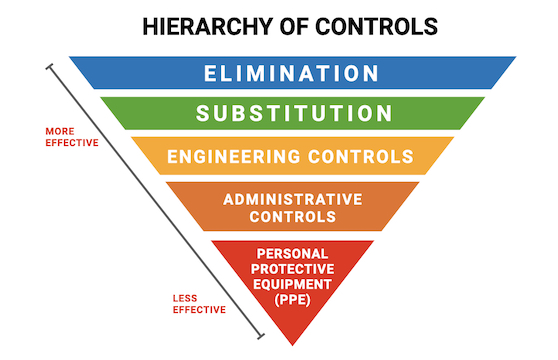
Articles
COVID-19 Updates
Features
Safety
Safety News
Ontario releases guide for developing COVID Workplace Safety Plan
June 24, 2020 | By Anthony Capkun

June 24, 2020 – The Ontario government has produced a new workplace guide—available as a handy Word template download—that will help employers develop a safety plan to better protect workers, customers and clients.
A key part of the workplace guide is risk assessment and control. The first step to controlling risks in a workplace is, naturally, to identify them. For COVID-19, the risks are related to how the virus spreads:
• Person to person, by people who are in close contact.
• By surfaces or objects, when people touch their face with contaminated hands.
The risk of getting COVID-19 is higher when you:
• Spend more time with potentially infected people.
• Work in close proximity to others.
• Interact with numerous people.
• Work in enclosed spaces (working indoors is riskier than outdoors).
The risk of severe health outcomes is not the same for all workers. The risk increases with age and for those with certain medical conditions. It is possible for COVID-19 to be spread by people who do not have any symptoms. Act as though everyone is infected when setting up controls.
Using the hierarchy of controls
The hierarchy of controls can help you choose the right controls for your workplace. (This chart applies to all workplace hazards, not just COVID-19.)
The controls are shown in order of effectiveness, from most effective to least effective:
• Elimination
• Substitution
• Engineering controls
• Administrative controls
• Personal protective equipment (PPE)

When making your plan, always consider the most effective controls first.
Elimination – Having all workers stay home eliminates COVID-19 risk from the workplace.
Substitution – For an infectious disease like COVID-19, substitution is not an option i.e. you cannot substitute one coronavirus for another, less nasty coronavirus.
Engineering controls – Physical changes to separate workers from the hazard, such as installing plexiglass barriers to separate workers from customers, or removing unnecessary doors that many people would have to touch.
Administrative controls – Making changes to the ways people work and interact using policies, procedures, training and signage. For example:
• Establish contactless curbside pickup.
• Create policies to limit the number of people in a space at one time.
• Stagger work shifts and breaks.
• Establish new cleaning and disinfection protocols.
PPE should only be used after other controls have been carefully considered, and all feasible options implemented.
The guide is supported by 121 workplace resources available at Ontario.ca/covidsafety to help protect workers from the virus. They include safety guidelines and helpful posters with tips for 28 distinct sectors such as construction, food, agriculture, manufacturing and long-term care.
Print this page